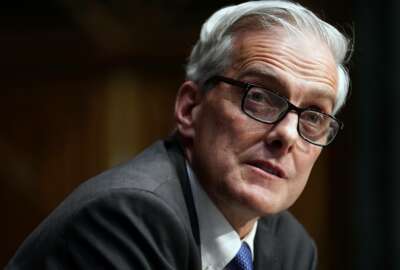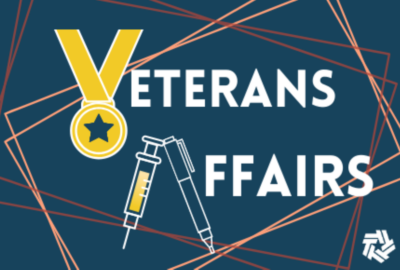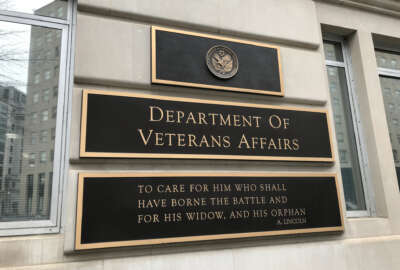How Veterans Affairs hiring of substance abuse disorder workers could have gone smoother
"They've hired across the spectrum in terms of what they need, but they're still hoping to fill some additional positions," Leigh Ann Searight said.
Back in 2022, the Veterans Health Administration (VHA) launched a multiyear hiring initiative to expand veterans’ access to substance use disorder treatment. The agency’s inspector general recently reviewed that initiative to see if it was successful in improving VA’s ability to treat substance abuse. It found that things could have gone a little better. To find out more, the Federal Drive with Tom Temin welcomed back Leigh Ann Searight, Deputy Assistant Inspector General for VA OIG.
Interview transcript:
Eric White What can you tell me about this hiring initiative and what was VA hoping to gain from it.
Leigh Ann Searight Prior to FY 2022, VHA determined that less than 30% of the 520,000 veterans with a substance abuse diagnosis had received specialized substance abuse treatment in the prior year. So they realized that there was a gap in their ability to provide coverage for these veterans, and they wanted to increase the wraparound services and improve that support for those veterans. So they they went about developing a plan which they wanted to hire approximately 1286 individuals, professionals, medical professionals, peer support, residential rehab personnel to really expand that coverage across VHA between about 22 and 23.
Eric White Can you give us an overview of the services that VHA provides to treat substance abuse? What is their capability? I guess if you can, you know, what were their capabilities before and after the hiring initiative if they changed at all?
Leigh Ann Searight So they had capabilities before they had residential rehab facilities, but just not an excessive amount. And and what they found is they really weren’t providing wraparound services for these veterans. So they really wanted to expand their ability to provide care where the veterans are in terms of having available therapy, having behavioral health specialists within primary care and within an especially setting. So when veterans come in for those regular reoccurring appointments that they can, you know, identify and start moving towards services to support those veterans. So some of the five areas that they really went to, increased care and coverage and as what they called stepped care. So that’s increasing the specialized providers within the services such as primary care and, you know, really reaching veterans where they are. And then, as I stated earlier, the residential rehab access, you know, residential rehab is a proven method for veterans suffering from substance abuse. And so VHA saw the demand for that increasing. And so they wanted to increase their ability to support those veterans and house. In addition, they have supported employment and hiring employment counselors to help these veterans gain employment and maintain employment supported services. So case managers and social workers, especially for those in the high risk areas that are either homeless or at risk for homelessness. And then lastly, peer support. So peer support is really veterans who have experienced substance abuse disorder themselves and they are trained and hired to provide that support to other veterans to help them through the process.
Eric White This is an undermanned area and not just for VA, but for the country overall in the U.S. health care system. What are some of the positions that VHA were looking to fill and are still in need of filling?
Leigh Ann Searight They still have quite a ways to go because even as of the end of 23, they’d only met 65% of their roles. So they were successful, mostly in hiring venture support and a behavioral health specialist. But they’ve hired across the spectrum in terms of what they need, but they’re still hoping to fill some additional positions. And like you said, you know, when they started this initiative, they were impacted by like every other health care system in terms of being able to hire medical professionals. And we saw that in FY 22, they really were only able to fill about 26% of those needed positions. However, they made some significant progress in 2013 and like I said, had reached up to 65% of their goal. The initiative is still ongoing and they’re still working on hiring additional physicians all the way through FY 25.
Eric White We’re speaking with Leigh Ann Searight. She’s deputy assistant inspector general for the Veterans Affairs Department’s Office of Inspector General. All right. So we’ve set the table on the issue itself and what VHA was trying to accomplish. What about the initiative itself? What is it about that that could have been a little bit better and maybe improve that that overall percentage of field positions?
Leigh Ann Searight So the initiative itself was a good initiative, but the challenge is that at the same time that this one initiative came out in suicide prevention and Mental Health Program office, there were five other mental. All hiring initiatives at the same time, coupled with all of the other hiring that VHA was doing across the enterprise. So if you push all of those things together as a hiring an HR office or hiring official, the prioritization becomes a challenge. What are my priorities? What am I supposed to focus on? Or even as the chief of mental health out of this, in or out of facility, what’s my priority? Who am I hiring first? And so there was a lot of opportunity for improved communication, improved priority prioritization, not just across the facilities or the business, but also within VHA. And the Office of Mental Health and Suicide Prevention falls under the Office of Clinical Services. And then there should have been coordinated coordination between that Office of Clinical Services and the Office of Workforce Management. But they didn’t utilize the tools and capabilities or really communicate those initiatives well to provide that information back down to the field, to minimize disruption and to streamline the process. Like with any federal hiring, you have a job description, you have an announcement, you have criteria that you’re looking for within that, a recruitment package. And they kind of streamline that and sort of made that a uniform document and documents to help the hiring officials move the hiring actions through. And then secondly, as with, again, any federal initiative, you have the funding issue while VHA with well funded to support this initiative, facilities were hesitant to start hiring until they had the money in the in their accounts. Right. Like I, I want to ensure that I have the resources to pay for these positions. And so we saw a delay between the time that the initiative kicked off and when the funding was actually filtered down to the facility and then even an additional delay beyond that for the facilities to get started with the hiring. So like in FY 22 and we saw a lot of facilities, didn’t even start the hiring process until March or even later. And with behavioral health, with medical professional hiring, it’s really at least a six to nine month hiring process, once you go through all the vetting and and clearances. So they were already well behind the power curve before they even started.
Eric White In a space where the need for talent is across the board. I imagine that hurt them in their running of trying to attract the the newest and best talent in the fields.
Leigh Ann Searight Right. I mean, it’s been reported a number of times that one of the challenges with with hiring within VHA is really that timely hiring. And so when you’re competing with outside factors that can make those offers and do those clearances much quicker, you lose opportunities as part of that.
Eric White As well as running several initiatives at once. It’s like running the dishwasher and washing machine at the same time, right?
Leigh Ann Searight Yeah. You will run out of hot water.
Eric White Absolutely. And so what recommendations did you all make for them to look for in the future? What did the agency have to say in response? And what can you tell me about where things currently stand?
Leigh Ann Searight Right. So we made three recommendations. And the first recommendation really had to do with how VHA spent the money. So within within the program, VHA, they they received $267 million. But we found out of that $267 million, about $14 million that really wasn’t used towards the purposes that it should have been. And so we’ve asked you to go back and research that and then ensure they put better controls in place to to allow for the use of that money appropriately. And then we also made a recommendation for VHA to define the roles and responsibilities of the entities as they will initiate the hiring initiatives and ensure that the priorities are communicated and that progress is monitored so that when they see things falling behind, they can react in a more timely manner. And then, you know, as challenges are encountered, that they’re addressed as as feasible.
Eric White Leigh Ann Searight is Deputy Assistant Inspector General for the Office of Inspector General with the Department of Veterans Affairs. Thank you so much for filling us in.
Leigh Ann Searight Thank you.
Copyright © 2025 Federal News Network. All rights reserved. This website is not intended for users located within the European Economic Area.
Tom Temin is host of the Federal Drive and has been providing insight on federal technology and management issues for more than 30 years.
Follow @tteminWFED






